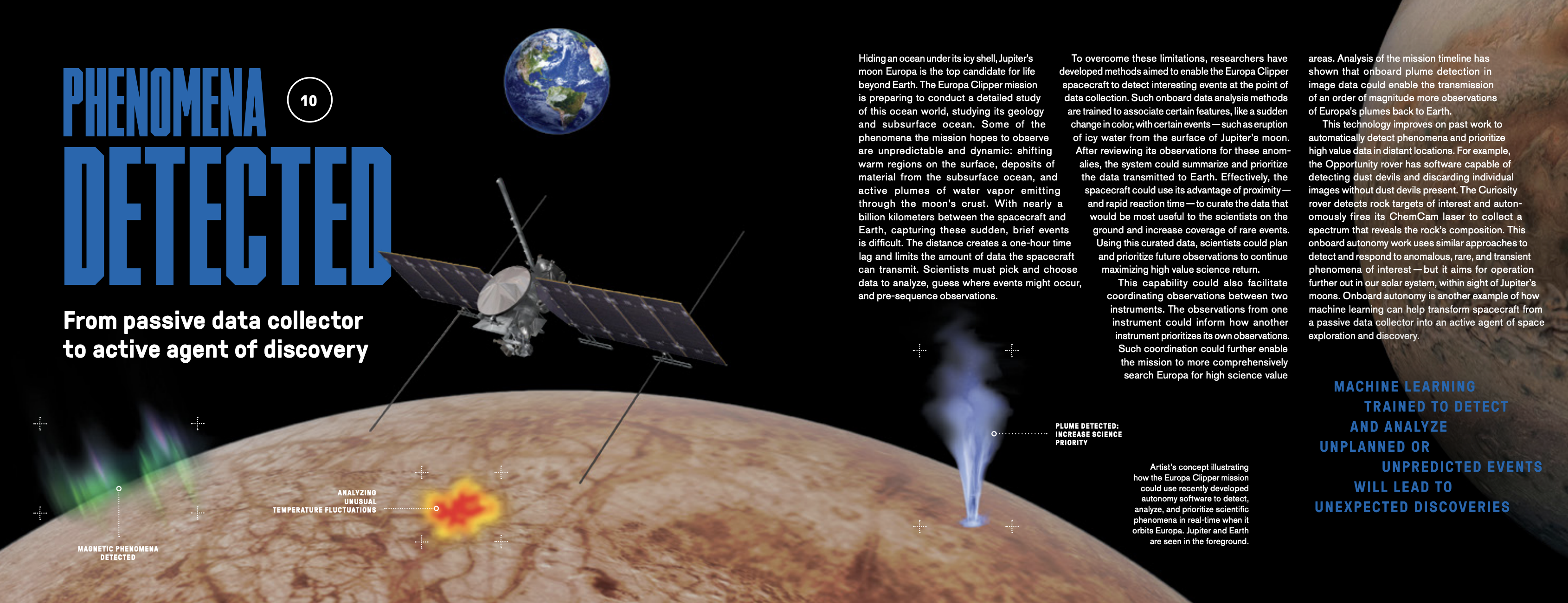Responsive Onboard Science for the Europa Clipper Mission
Principal Investigator
Gary DoranEmail: gary.b.doran@jpl.nasa.gov
The Europa Clipper spacecraft is scheduled to launch in 2024 and will carry a suite of nine science instruments to study and map Jupiter’s moon Europa during a series of over 45 flybys. Below its icy surface, Europa harbors a liquid water ocean that might provide a habitable environment for extraterrestrial life. Europa Clipper can increase our understanding of Europa’s habitability by discovering and observing phenomena such as water vapor plumes, thermal anomalies, and compositional anomalies, which are manifestations of interactions between Europa’s subsurface ocean and its surface that can be directly observed by the spacecraft.
There are several key challenges to operating a spacecraft around Jupiter. First, its distance to Earth severely limits the communication bandwidth, so every bit of data sent back from the spacecraft is precious. Second, along with bandwidth limitations come latencies of approximately 1 hour due to the time it takes light to travel interplanetary distances between Jupiter and Earth. This means that observations must be scheduled long before each flyby in a fixed sequence that is uplinked to the spacecraft ahead of time. Anomalous surface temperatures, compositions, or sudden changes in magnetic fields might therefore be missed, not measured with optimal instrument settings, or not discovered until observations are downlinked to Earth. This limits the quality and quantity of observations that can be made of unpredictable phenomena. Finally, Jupiter’s harsh radiation environment means that extra steps must be taken to protect Europa Clipper’s electronics, including the use of radiation-hardened processors and memory that are less capable computationally than standard commercial hardware.
To address these challenges, we are investigating approaches to perform data analysis onboard the spacecraft to (1) identify the most scientifically relevant or interesting data to downlink first, (2) analyze data quality to avoid downlinking data that has been corrupted in the high-radiation environment, and (3) identify thermal and spectral anomalies such as hot-spots, plumes, or deposits of organic materials at the surface. The identification of anomalies can enable either downlink prioritization or re-targeting of other instruments during flyby to collect more detailed information about a phenomenon.
 The Responsive Onboard Science for the Europa Clipper Mission project was highlighted in the JPL 2020 Technology Highlights report! View the full report here.
The Responsive Onboard Science for the Europa Clipper Mission project was highlighted in the JPL 2020 Technology Highlights report! View the full report here.
